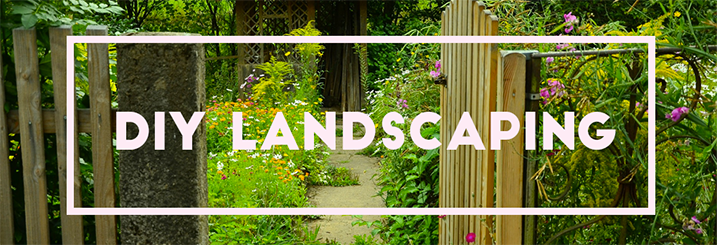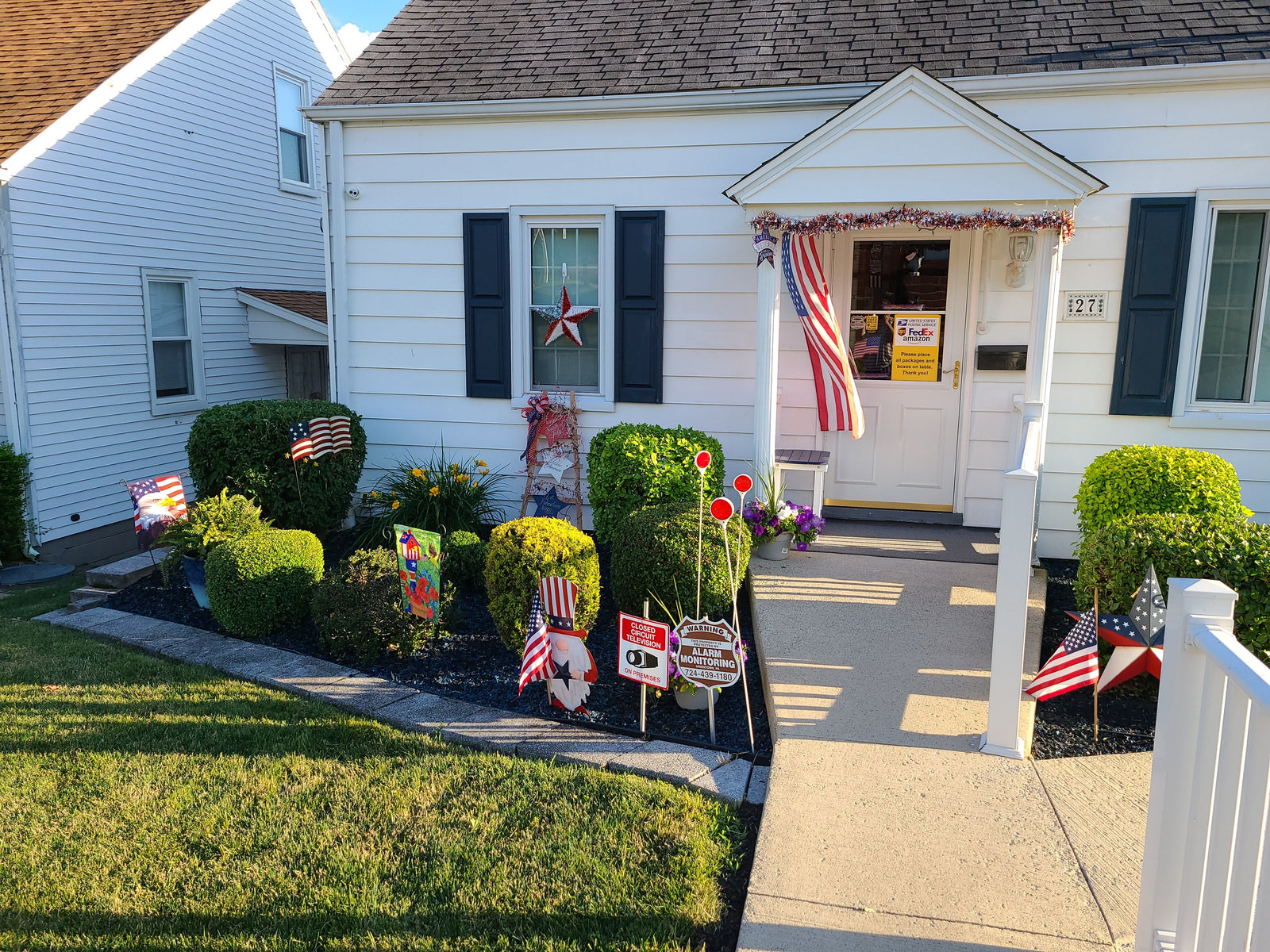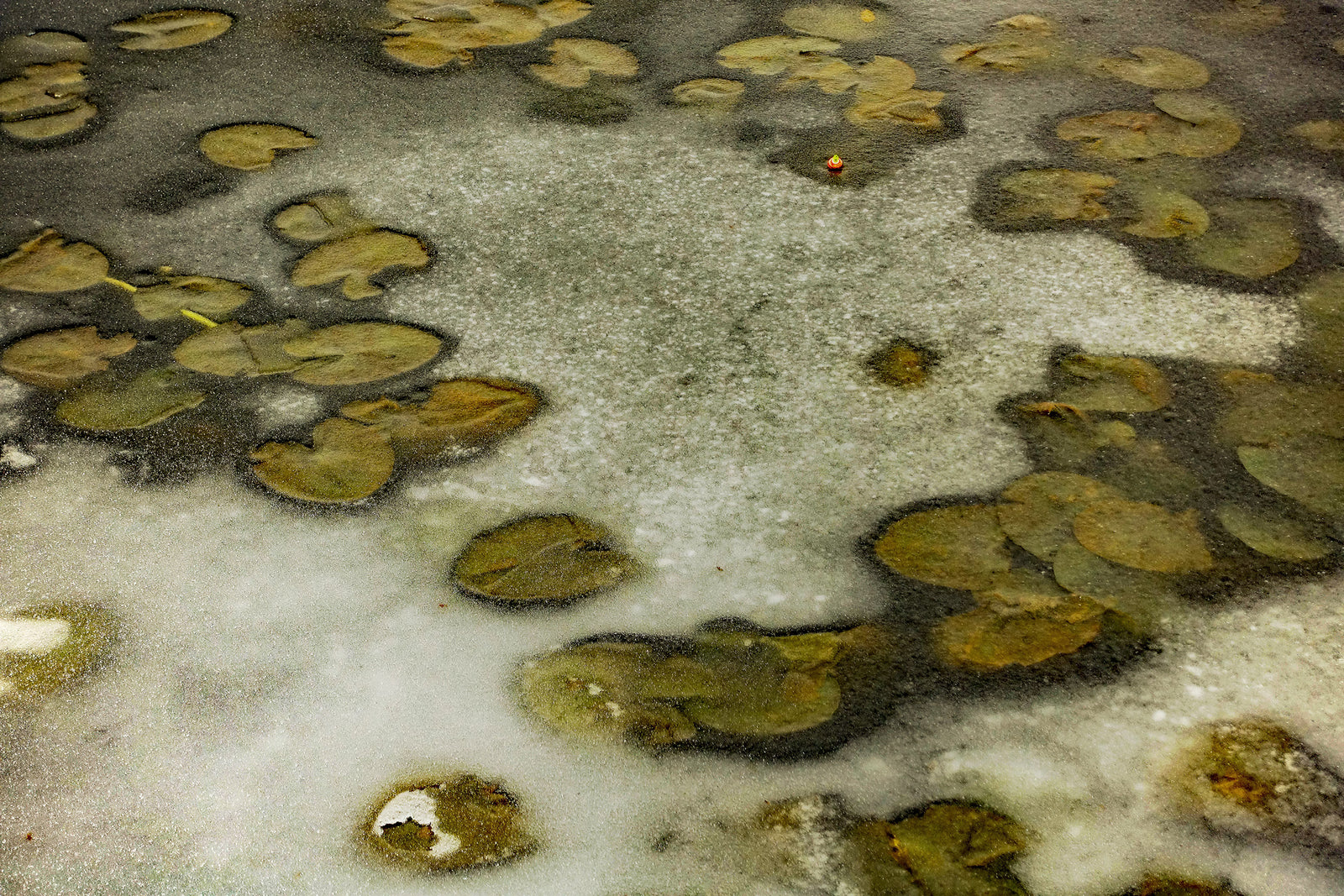April 05, 2016
DIY Landscaping
We sought the advice of several landscaping experts for some do-it-yourself tips on gardening and landscaping. They gamely answered questions ranging from budget concerns to managing a gardening schedule, through to selecting plants for a warm climate, plus their idea of a definitive “curb appeal” landscaping tip.
The six gardening gurus gave us helpful, carefully thought-out recommendations and threw in some of their personal experiences about managing difficult projects and weird requests. Let these pros guide you as you embark on your own DIY landscaping project.

1. WHEN YOU HAVE A LIMITED BUDGET:

 |
Start with the basics larger pieces. they can always add the smaller decorative items later when budget permits.
|
 |
|
 |
Limited budgets provide the opportunity to get creative with material selection. Using inexpensive materials such as gravel and river rock to bring down the scale of planting areas is a great way to reduce plant costs and create a visually interesting landscape. Repurposing old materials in a new way can also be an effective way of reducing costs (such as reclaimed bricks, pavers and wooden landscape ties). Finally, working through a plan for the space prior to beginning the installation work is probably the best way to keep the budget in check. A landscape design plan is a valuable strategic planning tool that also enables you to consider phasing of project components so that project costs can be split up over a period of time.
|
 |
|
 |
Spend your limited money working with a trusted designer whose work you like, and who will listen to your ideas and incorporate them into a custom plan. Tell the designer up front that you plan to do the labor yourself. Ask for help on all aspects of building a garden. For example: what is needed to properly prepare and amend the soil? What are the options for edging the beds? What type of fertilizer should be used when planting? Finally, what type of mulch will give the beds that finishing touch, protect the new plants and also defend against weeds? Another money saving tip: get a quote on buying the plants from your garden designer. This is a great option because your designer KNOWS the exact plants in your plan. In addition, garden designers have excellent resources for buying larger plants than are usually available in a retail garden center. Even better - these more mature plants are at wholesale prices. Finishing the Project Whether the designer purchases the plants or you have decided to source the plants yourself, here’s another tip. The best of both worlds would be to pay the designer to physically place the plants and make any onsite corrections if needed. I personally think this is THE MOST IMPORTANT part of any design job. I always adjust or at least tweak my designs onsite. Installing the garden yourself while working with a good designer that respects your b udget, will give your garden the professional look you want at an affordable price. Side note: Be prepared to pay for 100% of the designer’s time. This is always money well spent if you like the person and he/she gets your style. A colorful, creative design that grows and matures to look lovely for many years is a smart investment for your home. An attractive landscape plan compliments and beautifies your home’s exterior space. Not having a design plan, planting things that will fail to thrive, or the opposite --take over -- will inevitably result in your having to rip it all out after a few seasons and start again. This is a terrible waste of time, effort and money. Doing it right the first time is the right way to plant.
|
 |
Start with a foundation of a few nice shrubs and possibly and ornamental pending size of garden. Next fill in with perennials, they can be spaced out to twice their mature size. This spacing allows you to take them and the following year divide them and double your investment in plant material
|
2. WHEN THE PERSON IS BUSY AND DOESN'T HAVE TIME TO CARE FOR THEIR GARDEN:

 |
Plant items that require little to no maintenance. They might want to consider native material.
|
 |
|
 |
The majority of gardens we design these days fall under the low maintenance umbrella. Plant selection is a key part of this and as a rule of thumb, focusing on plants that provide foliage interest instead of showy flowers will reduce the amount of time maintaining garden beds. Utilizing mulch as a ground cover helps prevent weeds and adding areas of hardscape with landscape fabric underneath creates a near zero maintenance part of the garden. Finally, investing in an irrigation system, whether it be a full blown large scale system or a low flow system connected to the hose bib helps keep plants growing in the optimum conditions and reduces the need for watering throughout the hot summer months.
|
 |
|
 |
|
3. WHEN CHOOSING A COLOR SCHEME FOR THEIR GARDEN:

 |
|
4. WHAT PLANTS TO CHOOSE FOR A HOT CLIMATE AREA:

 |
|
 |
The best plants for hot sites are ones that can deal with periods of drought. Mediterranean plants such as lavender and rosemary are useful structural additions to the garden that require very little attention. Ornamental grasses such as miscanthus grass and blue oat grass provide great contrast to surrounding perennials and hold up on the hottest of sites. Groundcovers such as hens and chicks and wooly thyme can also be used to create a carpeting effect around perennials and in between flagstones.
|
5. WHAT PLANTS TO CHOOSE FOR A WARM CLIMATE AREA:

 |
If they are going to DIY, first visit the local home depot/ lowes and look at the plant varieties. They bring in plants that are cheap and thrive in the local area. Do you homework and select the plants that will work at your home. Google is amazing. You an learn anything about the plants. From how tall they grow to what type of soil they require to thrive.
|
6. WHEN THE GARDEN ALSO HAS A POOL:

 |
Keep the spaces around the pool clean and neat. Utilize stone or rocks around pool, mulch has a tendency to wash out of the landscape beds.
|
 |
|
 |
Be aware of bees, many pretty flowering plants will attract Bee's which can ruin a pool party. Also be careful in selecting plants if placing close to the water, evaporating Chlorine can kill delicate plants. Pool toys also are nice killers so make sure your plants a flexible and can take some abuse
|
7. ONE LANDSCAPING ADVICE FOR GREAT CURB APPEAL:

 |
Less clutter, make the investment into a signature piece/ unique specimen
|
 |
|
 |
Nothing makes a splash like annuals. Key placed annual beds and planters can make the front very inviting and also give the guest a taste of your style. Be aware that they will need to be watered regularly via irrigation or a hose but the payoff is more than worth it. You only have 1 chance for a first impression.
|
 |
|
 |
When people call for gardening help, what is often their biggest road block to curb appeal? Usually it comes down to old and tired landscaping that’s hiding the house. What to do and where to start? Walk out to your curb with a notebook and a camera, and look at your house as objectively as possible. What do you see? What do you like? What do you hate? What attractive architectural features of your home are hidden by wildly overgrown greenery? Write it all down and take a few telling photos. Look at the pictures and the answers will be there….in living or not so living color. There – you’ve taken the first step! It's overgrown, half dead, boring and tired. Be brave! Take it all out! I know this is HARD for lots of people -- but you can’t do a makeover without a new vision. By getting rid of all the old plants that were hiding your home, you will have a clean and uncluttered pallet on which to work. What to do next? Remember- it’s no longer in style to hide your house and foundation behind a monotonous wall of evergreens. So lighten up! Remember - less is always more. A great landscape plan … b r e a t h s. That being said - you will still need a few well-placed evergreens to look good all year, and more importantly - to anchor your design. Select cultivars that have a reasonable growth habit. Think in terms of both width and height at maturity. Too often, people plant adorable baby evergreens, forgetting that they will GROW. Choose, place, plant and space for the mature size. Stay away from anything that is going to get too big too fast and will try to smother your house. Remember – you only need a few evergreens. Then explore the many different kinds of flowering shrubs that add foliage/floral interest, color and movement to your home throughout the growing season. I love to work with Weigelias, Ninebarks, Hydrangeas and Roses. These hard working, reliable plants bring so much to a design in front yards. They offer punch with their pretty blooms and colorful foliage. Creating curb appeal in a landscape design means a balanced, stylish plan. Pick a few plants that you like and use them throughout the design for eye-catching appeal. Repeating a plant throughout offers continuity. It’s important to scale things in relation to your home’s structural design. Don’t plant tiny plants next to an expansive entry; use plants that will accent and compliment the space. The opposite is also true. A cozy entry should be planted with interesting miniature bushes that won’t overwhelm and hide the space. Remember – in this case, less is more. Choose a Focal Point What is a focal point? A focal point can be anything that grabs your attention and draws your eye into the space. Here are some examples: a small ornamental tree, a winding path, a brightly colored front door, a larger container, a vertical interest, an arbor, a sculpture, a water feature -- too many to list -- but I think you get the gist. Amazing Curb Appeal Hire a professional designer that knows your area and what works best in your climate zone, lighting and watering conditions. Local designers can save you not only money, but many seasons of disappointment. Simply stated, "A good designer brings so much more than just a design.“ They bring years of hands-on experience with the plants they are recommending. They have an intimate knowledge of the trees, plants and shrubs that will thrive alive in your garden. This is a great way to invest your money – into something beautiful that will pay living dividends season after season after season …
|
8. WHAT'S THE WEIRDEST REQUEST YOU'VE EVER GOTTEN FROM A CLIENT?

 |
Arizona desert style landscape in south Florida. It would have stuck out like a sore thumb in our neighborhoods.
|
 |
|
 |
|
9. THE HARDEST PROJECT YOU'VE EVER DONE?

 |
|
10. THE COMMON DILEMMA YOUR CLIENTS FACE?

 |
Never having enough money to get their backyard to look like the ones in the pictures.
|
 |
|
 |
|
CONTACT INFO:
|
Chase Greene |
Native Edge Landscape |
Take Root Gardens |
|
Ben Bowen |
JJ Hayden Inc. |
Jill Davis Design |

Also in Rubber Mulch Blog

Embracing Eco-Friendliness by Choosing Rubber Mulch for Your Playground
June 17, 2025
“Reuse, Recycle, and Reduce” are three main aims when it comes to preserving the health of our planet. Rubber mulch definitely falls within their scope. Conserving resources, energy efficiency, and better health for kids are all rubber mulch benefits.

Effective Mold and Fungi Prevention: The Hidden Value of Rubber Mulch
October 31, 2024

Create Your Own Sensory Path with Rubber Pavers
October 28, 2024
shop
Copyright © 2025 RubberMulch.com - All Rights Reserved.







 My biggest suggestion here would be to be creative, or wait. When a landscape is created on a limited budget, you just need to be creative with your selection of materials used, and focus the budget to big impact items, versus spreading the budget thin to cover more area. This combined with creativity will make a larger impact!
My biggest suggestion here would be to be creative, or wait. When a landscape is created on a limited budget, you just need to be creative with your selection of materials used, and focus the budget to big impact items, versus spreading the budget thin to cover more area. This combined with creativity will make a larger impact!

 Be very careful about plant choices and purchasing. Many nurseries have clearance sections tucked away in dark corners. The plants may be damaged a little but will be wonderful long term. When choosing your plants also keep in mind how large the plant will get. Many DIY gardens get over planted. Don't waste budget on buying more plants than your garden can actually sustain!
Be very careful about plant choices and purchasing. Many nurseries have clearance sections tucked away in dark corners. The plants may be damaged a little but will be wonderful long term. When choosing your plants also keep in mind how large the plant will get. Many DIY gardens get over planted. Don't waste budget on buying more plants than your garden can actually sustain!
 Hire a designer to create a beautiful landscape plan you love and then do the labor yourself. This can sometimes save you up to 50% or more!
Hire a designer to create a beautiful landscape plan you love and then do the labor yourself. This can sometimes save you up to 50% or more!

 Watering is critical and takes the most time. The solutions? You can install a watering system; there are three choices. You can purchase a professionally installed underground sprinkler system for lots of $$$, OR a DYI micro sprinkler such as #MisterMister. This system is easy to install and very affordable. For a little bit of $, you can also connect your containers to the system too. Best of all, you don’t have to take it out of your garden in the winter - just disconnect it from the faucet. The 3rd option is to install a regular soaker hose around all the plants and hide it under your mulch. You can poke holes in it if you need a greater water flow for a shrub or larger plant. My two DYI ideas can be connected directly to your faucet. Simply buy a “Y” Connect to leave this installed and ready t go. Just turn on the faucet and relax… you’re watering! Now you can pour yourself a beverage and look for better ways to spend your precious free time!
Watering is critical and takes the most time. The solutions? You can install a watering system; there are three choices. You can purchase a professionally installed underground sprinkler system for lots of $$$, OR a DYI micro sprinkler such as #MisterMister. This system is easy to install and very affordable. For a little bit of $, you can also connect your containers to the system too. Best of all, you don’t have to take it out of your garden in the winter - just disconnect it from the faucet. The 3rd option is to install a regular soaker hose around all the plants and hide it under your mulch. You can poke holes in it if you need a greater water flow for a shrub or larger plant. My two DYI ideas can be connected directly to your faucet. Simply buy a “Y” Connect to leave this installed and ready t go. Just turn on the faucet and relax… you’re watering! Now you can pour yourself a beverage and look for better ways to spend your precious free time!






